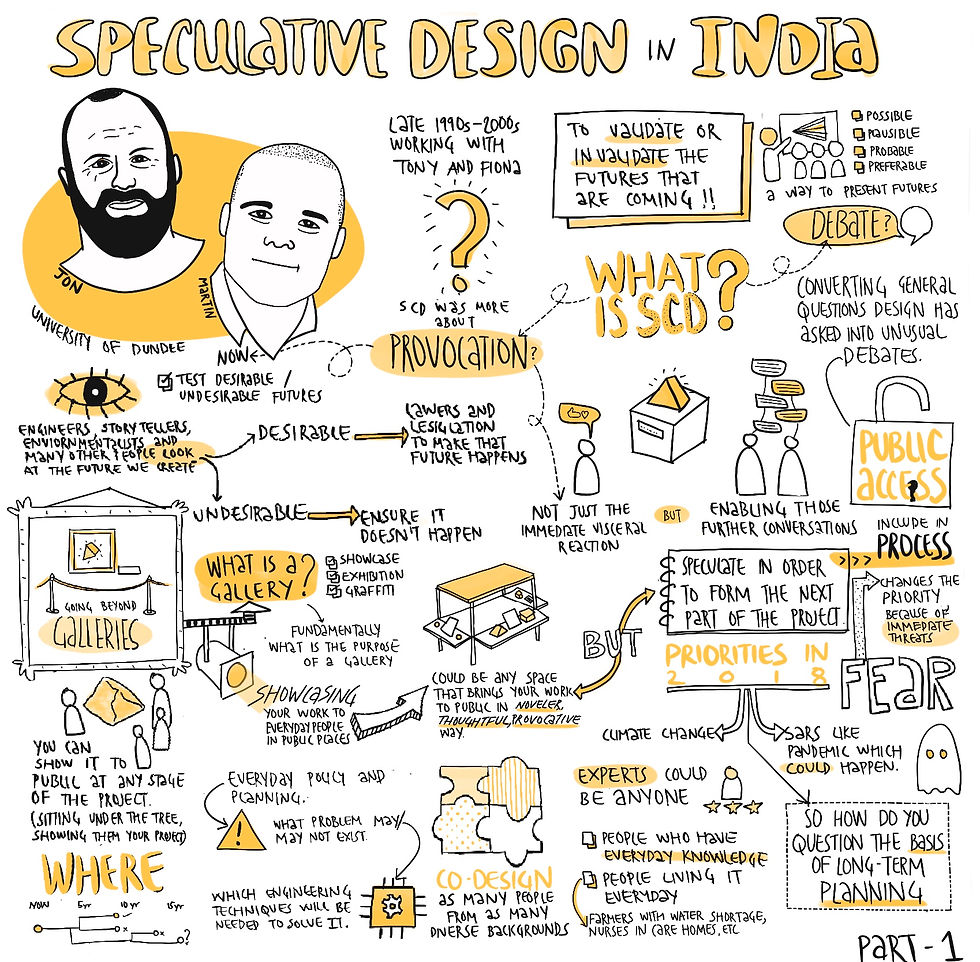SCD in India with Jon Rogers and Martin Skelly
- Siddhi Patil

- Jun 11, 2020
- 2 min read
Updated: Aug 24, 2021

Speculative and Critical Design is a way to present futures that we would actually want. It enables people to test these futures. They can look at the futures we create and we could then effectively test whether these futures arrive. We could also put a lawyer or legislation in place to make sure that this future happens or if it is a provocative future, ensure it doesn’t happen. Most of the work so far is focused on policymakers itself but there are opportunities to convert general questions that design has asked into unusual debates. Previously it was for a very specific limited audience, but it always could be much more than that. Showcasing and having your work held to account like everyday people, public is really important. On that level, you get these unexpected responses to your work from ordinary people. It is not necessary that the audience should be involved in the end. It is not necessary that the final outcome is the most interesting. There is actually a richness in the middle.
Speculative and critical design can arrive at any stage of the process.
Speculative and critical design can arrive at any stage of the process. The opportunities that they provide can be really really valuable. Critical Design and Affirmative design do not exist as either-or, they co-exist. SCD’s value is about seeing gradual long term change in imagining hopeful futures. If we are designing the lived experience of the future then we can’t do that in isolation of the lived experience now and we can’t do that in isolation from the conversation of us, we want it with the people who are going to have that future impacted upon and for them to tell their stories of how well it might be.
There’s often trap designers fall into and that is the creative process where they’ve assumed the role of expert or enabler of knowledge between experts and non-experts and in this context you often find that people who are living the experience or the non-experts were providing the narrative for the futures. The people with the most expertise, the most relevant knowledge on this project are the people who have everyday knowledge of the lives they live. We are not creating debates between farmers and scientists and the climate change in the future of farming in India. Jon thinks we’re actually trying to build props and examples to help procreate and co design stories of the future and not any debates on the future.
The outcomes that come at the end are some of the work happening as designers action, and starting that conversation, and possibly in the ideal world, some of the stories and narratives that come out of these speculations that you know more directly are followed up with affirmative projects that make functional things that we in the community.
There’s never just one single hopeful future.






Comments